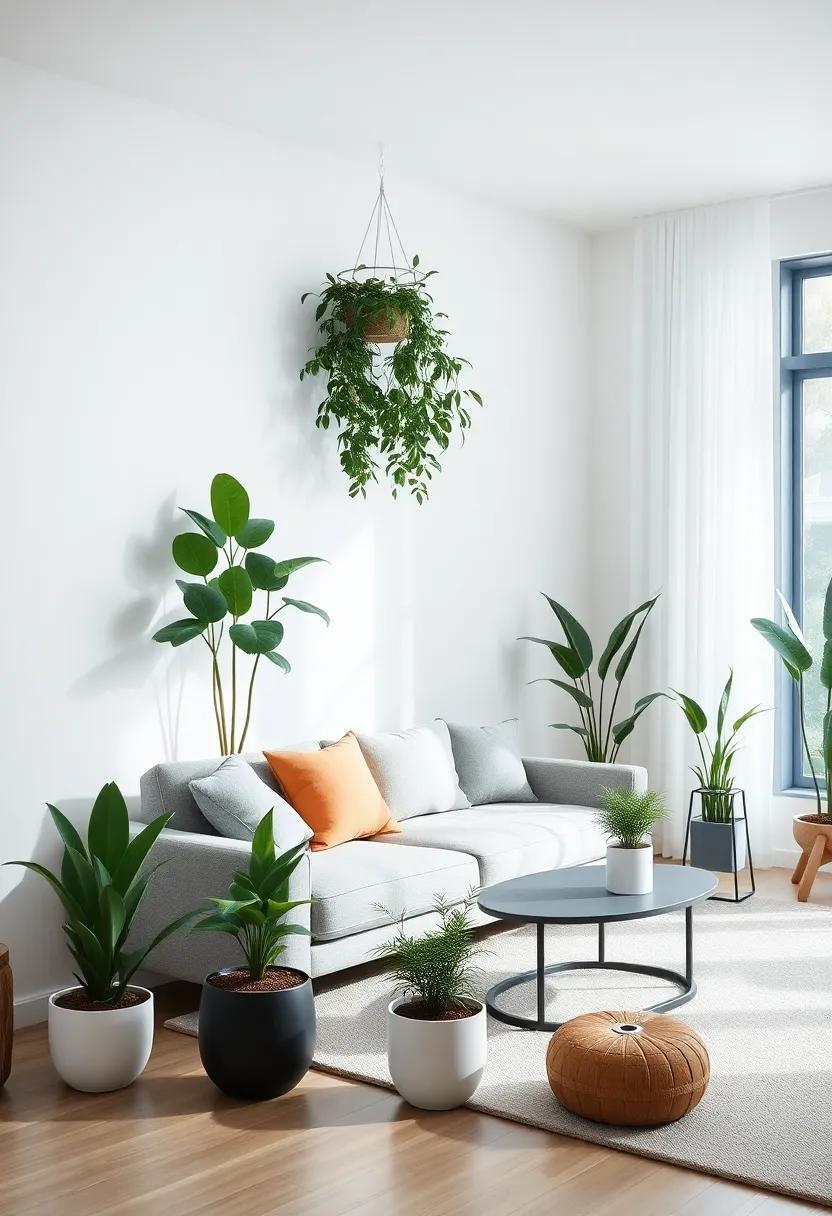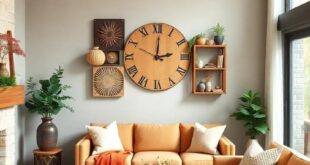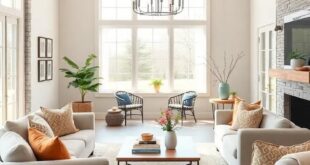Welcome to a green oasis in the heart of your home! If you’re looking to breathe new life into your apartment living room, there’s no better way than by incorporating the beauty and benefits of potted plants.In this listicle, we’ve curated 25 inspiring ideas that will guide you through the transformative power of greenery. Whether you’re a seasoned plant parent or just beginning your journey into indoor gardening,you’ll discover a variety of creative approaches to enhance your space. From picking the right pot to arranging plants for maximum impact, each suggestion will help you cultivate a vibrant atmosphere filled with freshness and personality. Get ready to turn your living room into a serene sanctuary that reflects your unique style,while also purifying the air and improving your well-being. Let’s dig in and explore these inspiring possibilities!
Create a Cozy Corner: Arrange a collection of potted plants in a corner to craft a serene nook for relaxation and reading

Transform a forgotten corner of your living room into a peaceful retreat by gathering an assortment of potted plants. Choosing various sizes and shapes can add visual interest while enhancing the natural tranquility of the space. consider incorporating a mix of leafy greens like ferns and pothos, alongside tall statement plants such as a dracaena or fiddle leaf fig. Cluster them on a small table or let them cascade from hanging planters to draw the eye upward and create a lush, inviting atmosphere.
To elevate the serenity of this nook, add cozy seating—think a soft armchair or a cozy floor cushion. Surround your plants with soft lighting options like string lights or a stylish floor lamp to create a warm ambiance perfect for reading or daydreaming. Consider placing a small side table nearby to hold your favorite books and a cup of tea, giving you everything you need for a blissful retreat within your own home. Embrace textures with woven baskets for plant pots or throw blankets draped over furniture to provide tactile warmth, making this corner an irresistible space for relaxation.
Layer Heights: Use plants of varying sizes to create a visually engaging, layered effect that draws the eye upwards
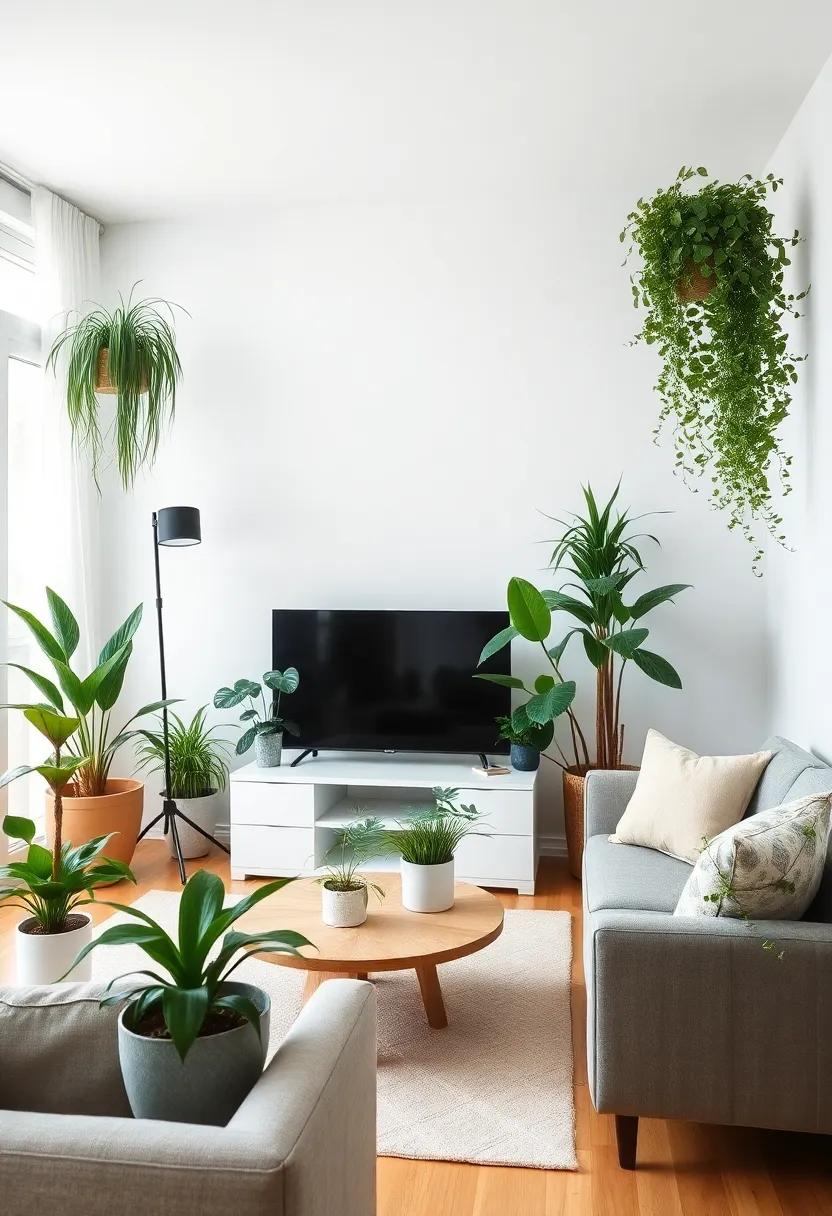
To create a stunning visual appeal in your living room,consider integrating plants of various heights. Start with towering floor plants, such as a majestic fiddle leaf fig or a stately rubber tree, to establish the foundational layer of your green ensemble. Next, introduce medium-sized plants like snake plants or pothos on pedestals or side tables to bridge the gap. add delicate herbs or smaller succulents on shelves or window ledges to draw the eye upward, creating a dynamic and inviting atmosphere.
Establishing a tiered arrangement not only enhances the aesthetic but also encourages the exploration of space. Mixing textures and colors in plants contributes to a lively habitat. As an example, pairing the bold leaves of a ZZ plant with the soft, trailing vines of a string of hearts will create contrast and intrigue.Don’t forget to use planters of different sizes and shapes to further this layered effect. Here’s a quick reference table to help you plan your layered plant arrangement:
| layer | Plant Examples | Placement Ideas |
|---|---|---|
| Floor Layer | Fiddle Leaf Fig, Rubber Tree | Corner or next to furniture |
| Mid Layer | Snake Plant, Pothos | On pedestals or side tables |
| Top Layer | Succulents, Herbs | On shelves or window ledges |
Color Coordination: Select pots in colors that complement your decor to create a harmonious visual effect in your living room
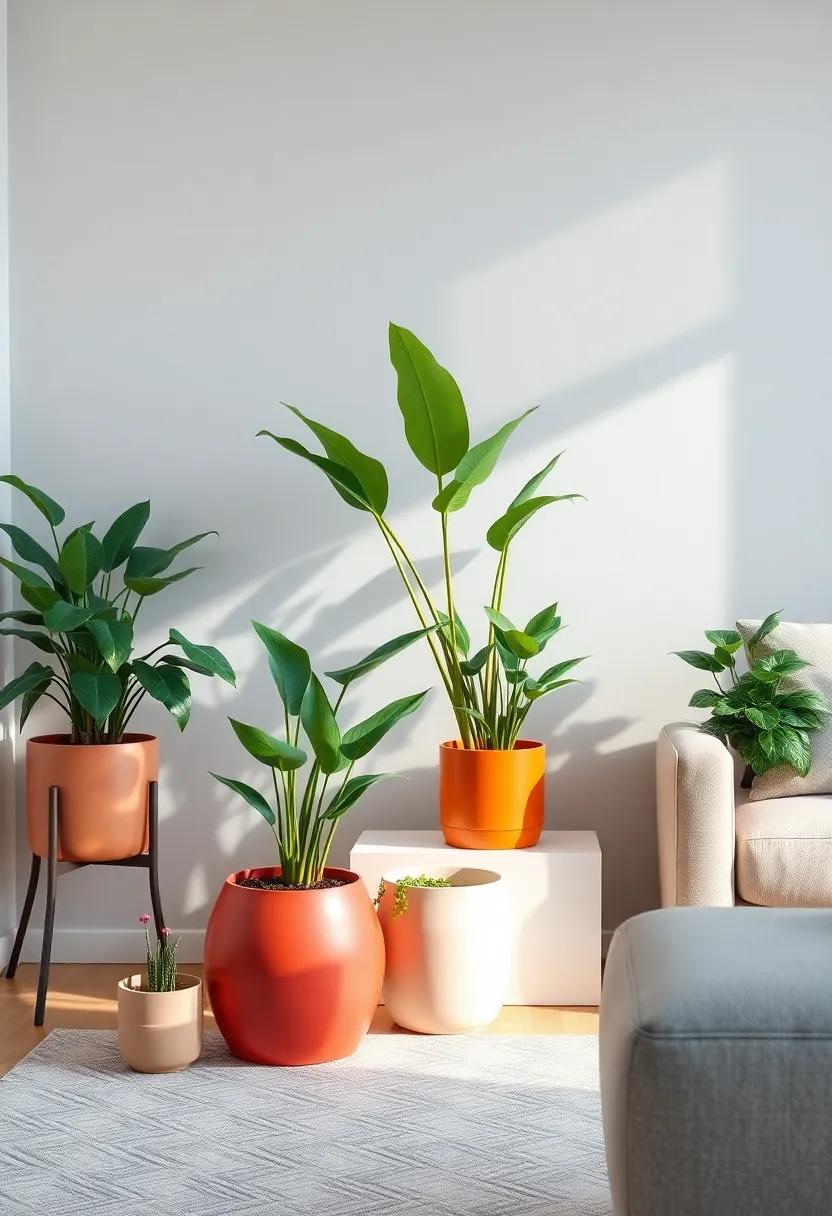
Choosing the right hues for your potted plants can elevate your living room’s aesthetic, creating a space that feels both cohesive and inviting. To achieve this, consider selecting pots that echo the colors present in your existing decor, such as your furniture, artwork, or textiles. For a modern touch, you might opt for sleek metallic pots that shine against a minimalistic backdrop, or pick vibrant, bold colors that stand out against neutral walls, drawing the eye to your leafy companions. The key is to ensure that each pot harmonizes with its surroundings, enhancing rather than overpowering the overall look.
To help you visualize how color can affect your living room, here are some suggestions:
| Color Palette | Suggested Pot Colors |
|---|---|
| Warm tones (reds, oranges, yellows) | Earthy terracotta, deep reds, burnt oranges |
| cool tones (blues, greens, purples) | Soft sage green, royal blue, lavender |
| Neutral palette (whites, grays, browns) | Charcoal gray, crisp white, natural wood |
Additionally, you can create visual interest by mixing various textural elements. Consider matte finishes for a rustic feel, glossy ceramic pots for sleek sophistication, or woven baskets for a casual vibe. Experiment with different shapes, such as tall vases or bulbous pots, to add dimension to your plant display. The combination of colors and textures will not only enhance the beauty of your potted plants but also contribute to a warm and inviting atmosphere in your living room.
Hanging Gardens: Use macrame hangers or wall-mounted shelves to display trailing plants, introducing an element of vertical space
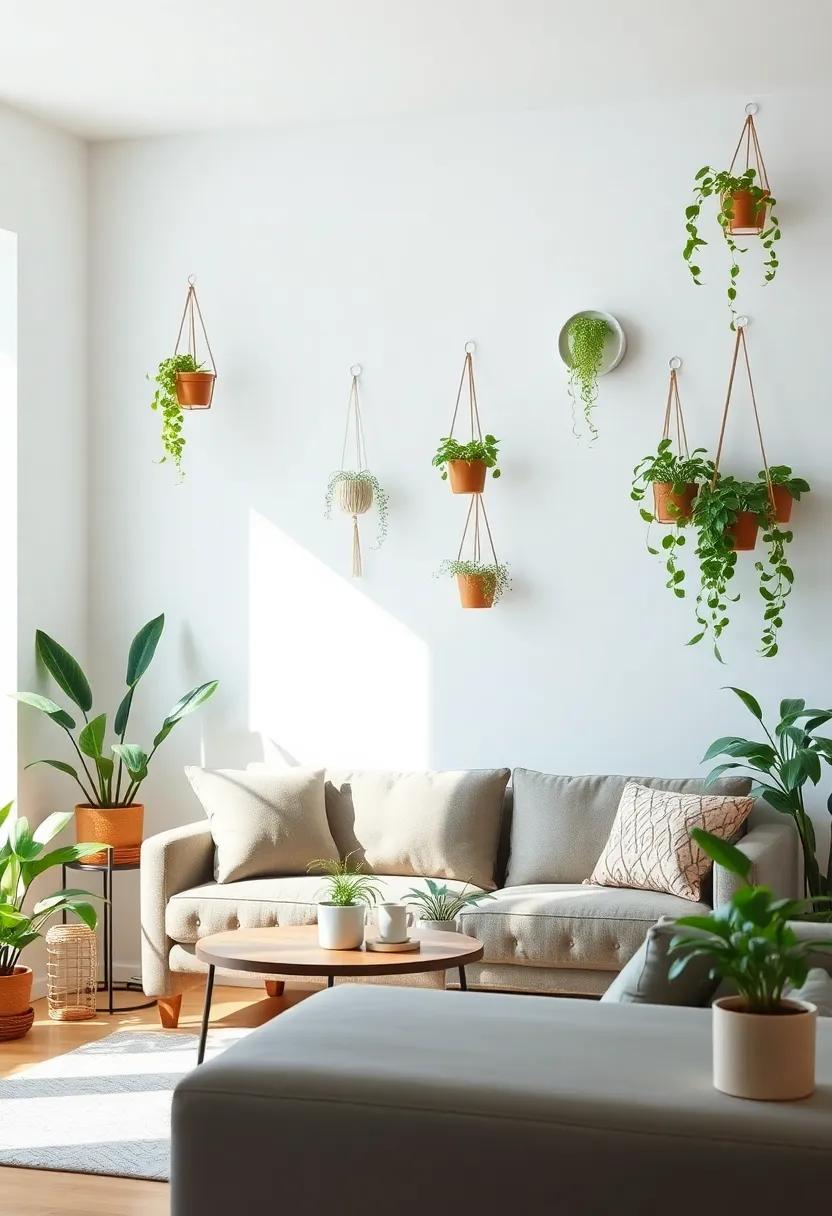
Elevate your apartment living room by embracing the art of vertical gardening. Using macrame hangers to suspend your trailing plants not only saves floor space but also creates a stunning visual display that draws the eye upward. Consider using materials like natural cotton or jute for a bohemian vibe, or opt for synthetic fibers if you’re looking for durability and weather resistance. Adding a variety of plants, such as pothos, string of hearts, and philodendrons, will bring a lush and vibrant feel to your space. hang them at different heights to add depth, and mix in a few decorative knots to enhance the aesthetic appeal of the hangers.
Wall-mounted shelves offer another excellent option for showcasing your greenery. Installing shelves allows you to create a tailored arrangement of potted plants that can serve as a focal point in your living room. Choose floating shelves for a sleek look, or use functional wooden crates for a rustic charm. Here are a few tips to consider when arranging your plants on shelves:
| Plant Type | Light Requirements | Suggested Shelf Height |
|---|---|---|
| Pothos | Low to Bright indirect | Mid-level to High |
| Snake Plant | Low to Bright Indirect | Low to Mid-level |
| Spider Plant | Bright Indirect | Mid-level to High |
Combining these two styles transforms ordinary wall space into a lively garden oasis, offering both function and flair. With careful planning and a little creativity, your vertical plant display can become a stunning conversation starter that infuses your living room with nature’s charm.
plant Shelfie: Dedicate a shelf to your beloved plants, mixing in decor items to create an attractive and curated look
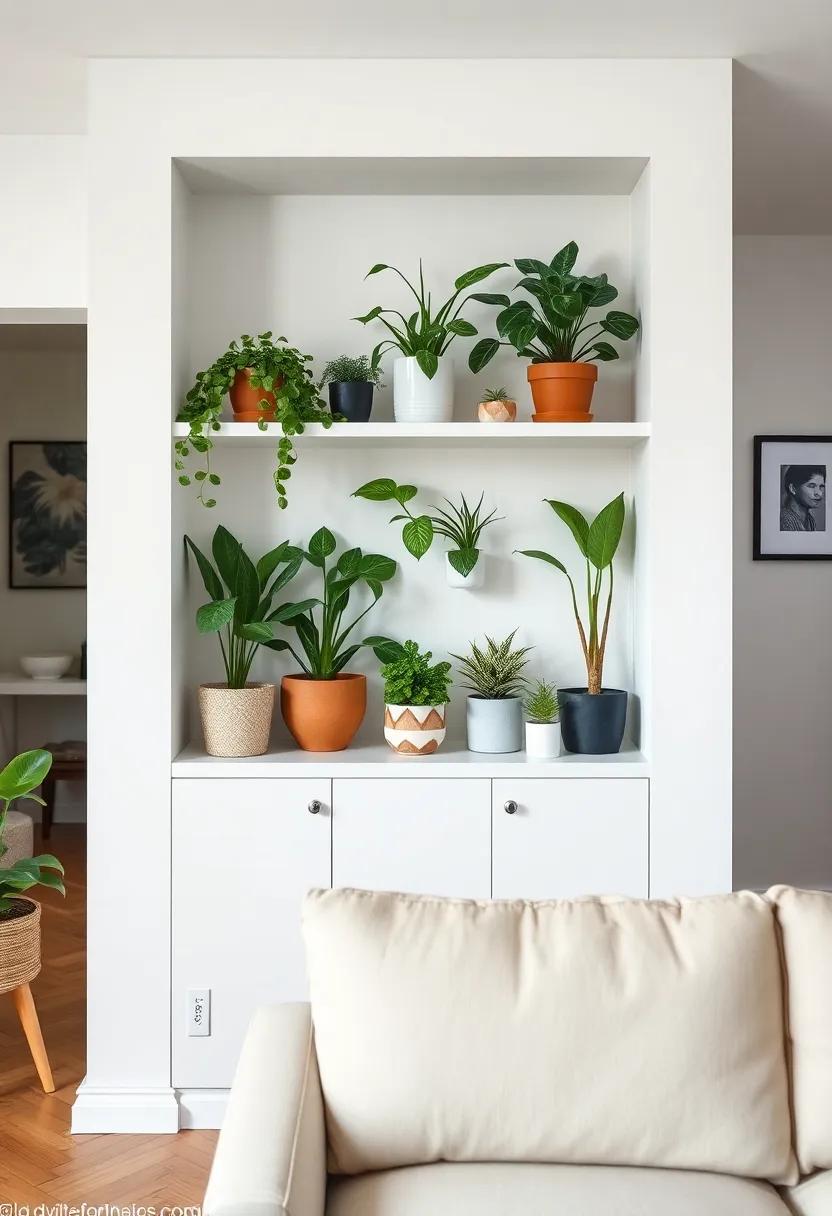
Creating a dedicated shelf for your beloved plants is a delightful way to enhance the character of your apartment living room. Consider mixing a variety of plant species to showcase their unique shapes and colors. Such as, pair a vibrant fern with a tall snake plant and a trailing pothos. This not only creates visual interest but also encourages healthy growth by offering a diversity of height and texture. Surround your green friends with eye-catching decor items such as ceramic pots,artistic sculptures,or framed artwork that reflects your personal style. A thoughtful arrangement can turn a simple shelf into an engaging focal point that invites admiration.
To make the most of your shelfie, consider the color palette and overall theme of the room. A cohesive look can be achieved by selecting decor items that complement the greens of your plants. Try incorporating elements like books, candles, or vintage finds in soft earth tones or bold pops of color. Additionally, utilizing tiered plant stands or floating shelves can heighten the overall display by adding dimension. Remember to incorporate textures through natural fibers, such as woven baskets or fabric accents. This combination of plants and decor will not only breathe life into your living space but also create an aesthetically pleasing and curated atmosphere.
Theme It Up: Choose plants that fit a specific theme—like tropical or desert—to provide a cohesive aesthetic appeal
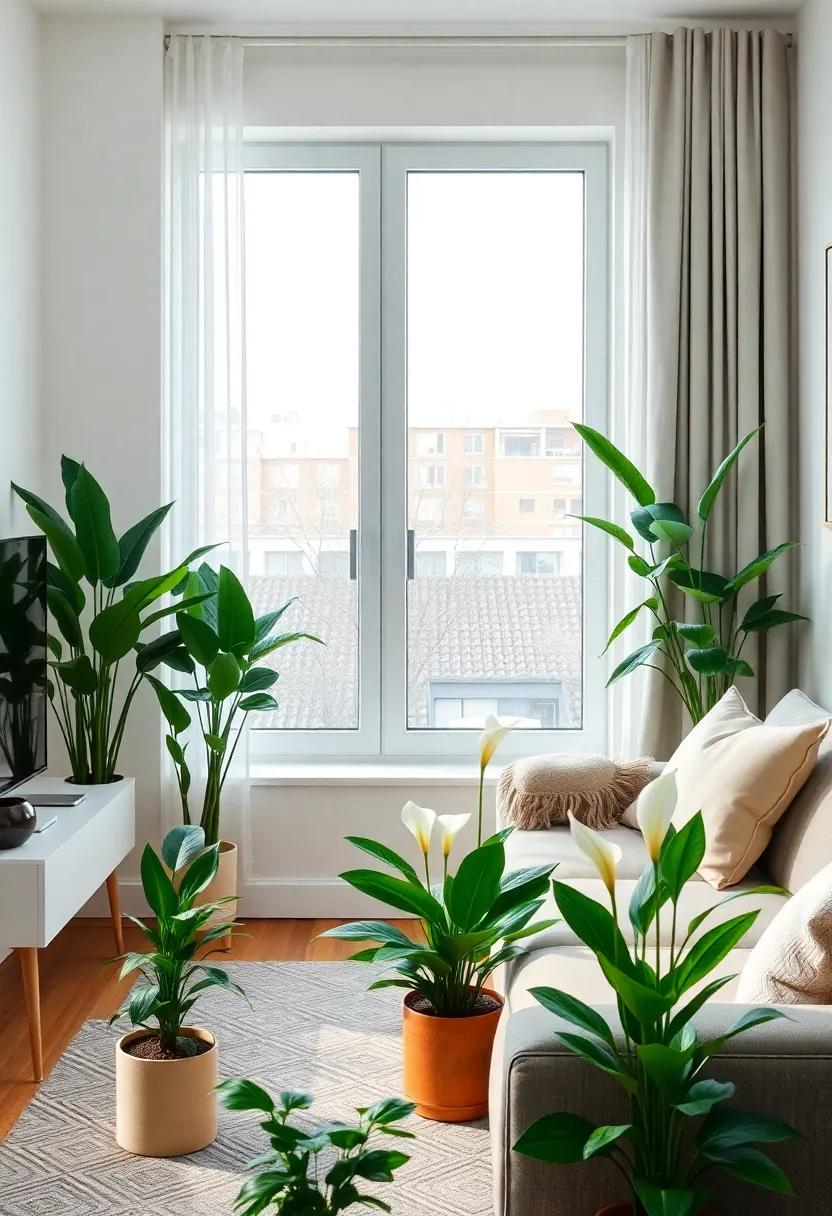
One of the most exhilarating aspects of designing your living space is the chance to create an immersive theme with plants that can transport you to another world. If you want to transform your apartment into a tropical paradise, fill it with lush greenery and vibrant colors. Consider using Bird of Paradise and Monstera Deliciosa for their large, dramatic leaves, while Orchids add a pop of color with their exotic blooms. Complement your green companions with Bromeliads or Ferns to create texture and depth. These plants not only thrive in warm environments but also infuse your living room with a sense of adventure, making every day feel like a mini-vacation.
On the othre hand, if your aesthetic leans toward arid landscapes, opt for succulents and cacti that encapsulate the spirit of the desert. A selection of Aloe Vera, Echeveria, and Haworthia can introduce a fascinating diversity of shapes and colors while requiring minimal maintenance. Use a collection of terracotta pots to mirror the natural tones of desert soil, and incorporate decorative stones or sand for a stunning visual effect. To enhance the theme, consider placing a rustic wooden shelf to display your plants and intersperse them with desert-inspired artwork, creating a harmonious and cohesive look in your living space.
| Tropical Plants | Desert Plants |
|---|---|
| Bird of Paradise | Aloe Vera |
| Monstera Deliciosa | Echeveria |
| Orchids | Haworthia |
| Bromeliads | Cacti |
| Ferns | Jade Plant |
Natural Air Freshener: Select fragrant plants such as lavender or mint which not only look good but also enhance the scent of your living space
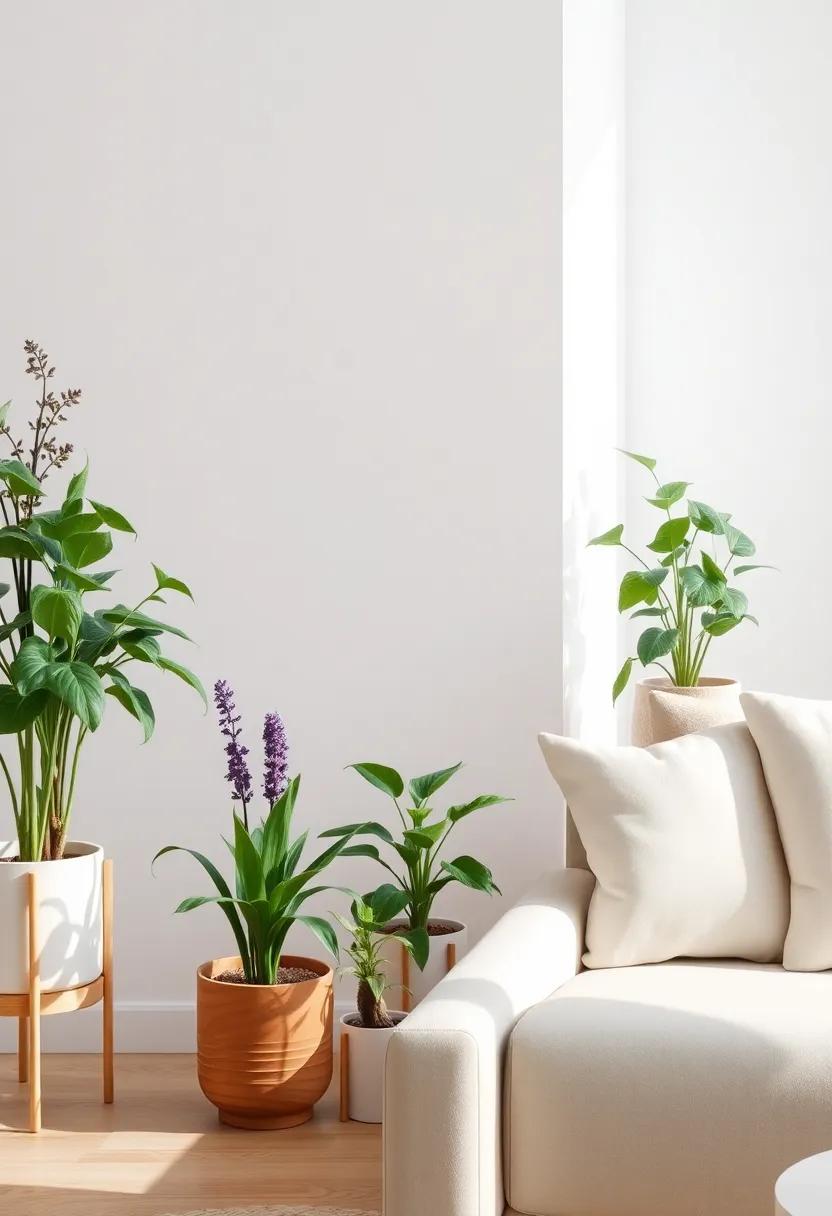
Incorporating fragrant plants into your living space not only elevates the visual appeal of your apartment but also introduces a refreshing aroma that can uplift your mood. Consider placing a lavender plant on your windowsill; its soothing scent can create a serene atmosphere, perfect for relaxation after a long day. Additionally, the mint plant, with its invigorating fragrance, can energize your space and provide a delightful touch when you run your fingers through its leaves. Try using lovely pots that complement your decor to make these herbs a show-stopping part of your living room.
To enhance the olfactory experience further, think about a combination of fragrant plants. Here are some aromatic choices to include:
- Rosemary – Not only aromatic but also great for cooking!
- Basil – Fresh and sweet, adds a foodie’s charm.
- Jasmine – Lush, sweet scent perfect for evenings.
- Lemon Balm – Bright citrusy fragrance that refreshes the air.
Each of these plants can be easily cared for and will bring an alluring scent and vibrant life to your living room, creating a cozy and inviting environment for you and your guests.
Use Statement Pots: Invest in unique, artistic pots that serve as conversation starters and focal points in your living room
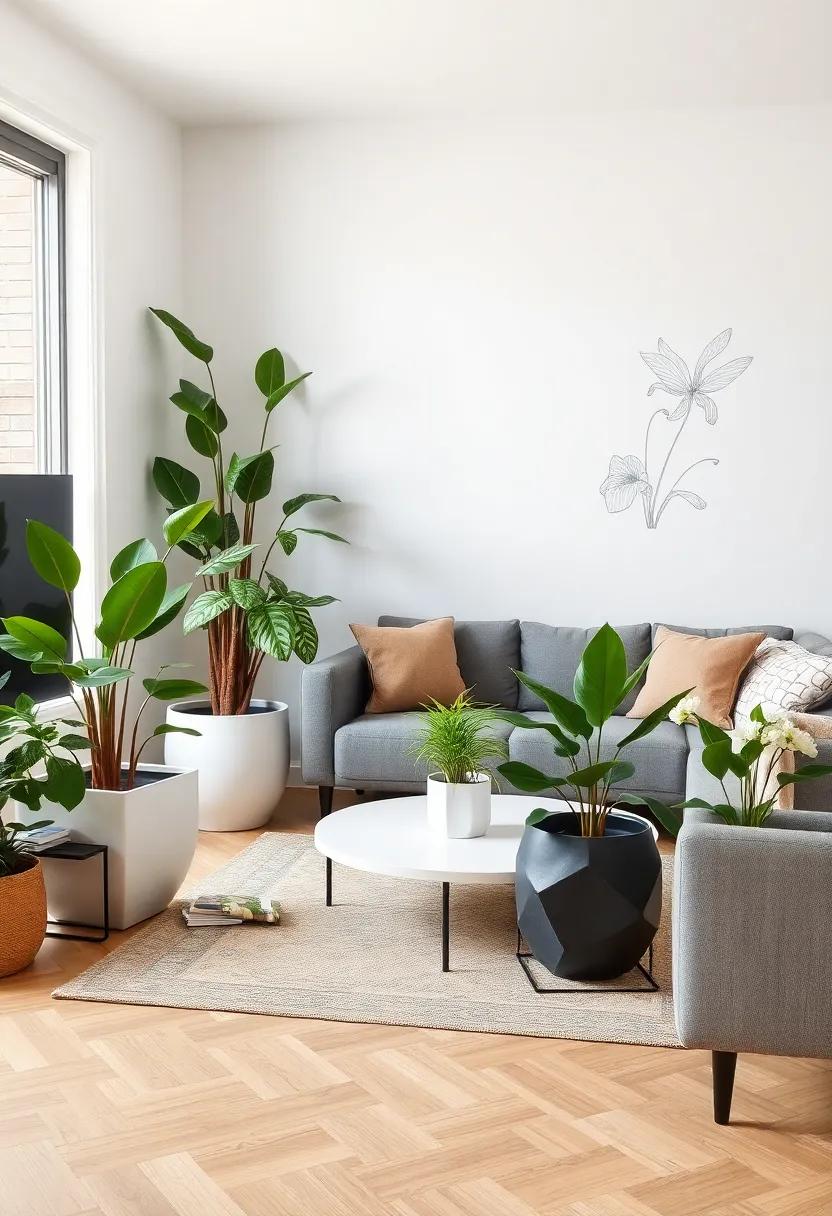
transform your living room into a vibrant and inviting space by incorporating unique and artistic pots that not only house your plants but also serve as captivating conversation starters. When choosing statement pots, consider bold colors, quirky shapes, or intricate designs that reflect your personality and enhance the overall aesthetic of your room. These pots can be strategically placed on shelves,coffee tables,or window sills,ensuring they draw attention and spark interest among your guests. Opt for designs made from varied materials like ceramic, concrete, or metal to create an eclectic mix that will elevate your greenery.
To make the most of your artistic pots,pair them with distinctive plants that complement their features. A few ideas to consider include:
- Cacti or succulents: Their unique textures and shapes harmonize beautifully with intricate pots.
- Ferns: Lush foliage can help soften the edges of a modern, angular pot.
- Flowering Plants: Choose vibrant blooms that resonate with the pot’s color scheme for a striking contrast.
By mixing and matching various pot styles and plant types,your living room will become a stunning gallery of nature and artistry. Keep experimenting until you achieve a layout that feels balanced and inviting!
Create a Plant Ladder: Repurpose an old ladder as a plant stand, adding a rustic touch while showcasing various plants at different levels
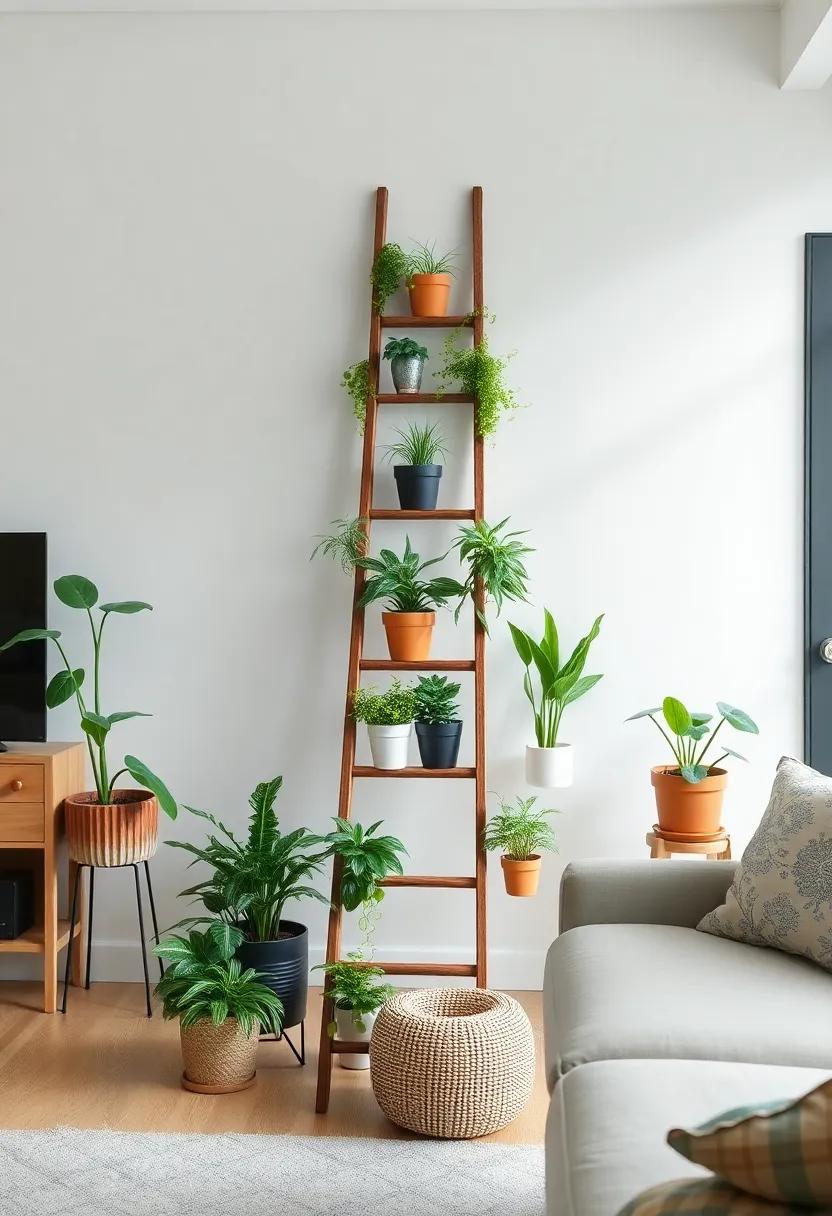
If you have an old ladder lying around, consider giving it a new life by transforming it into a charming plant stand. This unique display not only adds a rustic aesthetic to your living room but also allows you to showcase your favorite greenery in an eye-catching way. Place the ladder against a wall or in a corner and use the various rungs to hold your plants at different heights, creating a visually dynamic arrangement.
To enhance the look, you can use different types of planters such as ceramic pots, hanging baskets, or even repurposed containers to give each level a distinct character.Here are some ideas for what you can place on your plant ladder:
- Succulents: Small and colorful, perfect for the top rungs.
- Herb pots: Ideal for the middle section, adding both beauty and utility.
- Trailing plants: Let them cascade down from the lower rungs for a lush effect.
- flower pots: Vibrant blooms can bring life to your decor.
| Plant Type | Light Needs |
|---|---|
| Succulents | Bright, indirect light |
| Herbs | Full sun |
| Trailing Plants | Indirect light |
| Flowering Plants | Moderate to bright light |
With the right plants and a little creativity, your repurposed ladder can become a statement piece in your living room. Not only does it elevate your plant game, but it also speaks to a resourceful design approach that embraces both vintage charm and modern decor principles.
Terrarium Centerpiece: Craft a terrarium that can act as a captivating central piece, letting nature thrive indoors
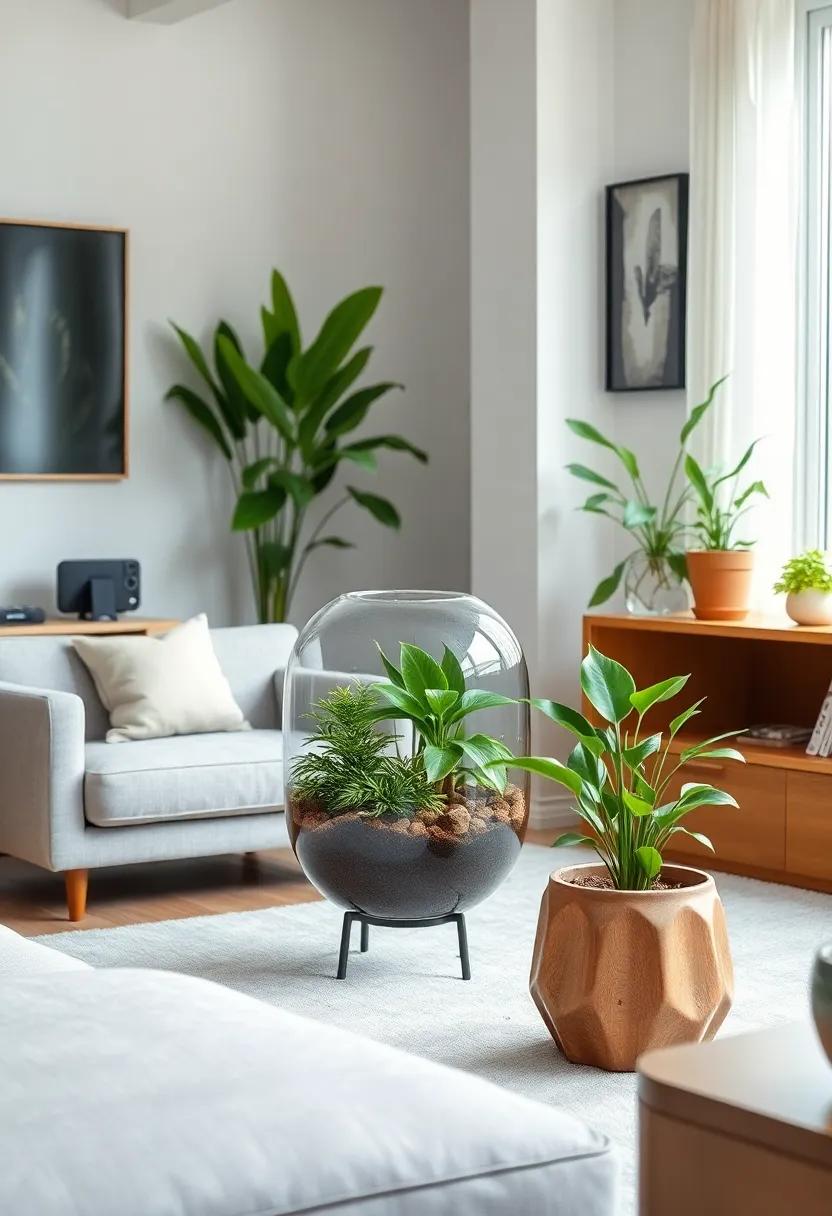
Transforming your living room into a serene oasis is easier than you might think. A thoughtfully crafted terrarium not only serves as a stunning focal point but also introduces a breath of fresh air into your indoor environment. You can choose a sleek glass container, like a globe or geometric shape, which showcases layers of soil, pebbles, and vivid greenery. The appeal of a terrarium lies in its versatility; you can create mini ecosystems featuring succulents,ferns,or air plants,tailored to fit the light conditions and aesthetic of your space. Consider adding decorative stones or driftwood for a touch of texture,along with soft fairy lights for enchanting evening ambiance.
To begin, selecting the right materials is crucial for a successful terrarium. Frist, gather your supplies: obvious container, potting soil, activated charcoal (to keep the environment fresh), and various plants. You may want to incorporate a few moss varieties or colorful stones to add layers of interest and vibrancy. Creating a moist but well-draining environment allows these plants to flourish. A well-planned terrarium doesn’t just enhance the beauty of your living room; it also encourages mindfulness and a connection to nature that rejuvenates the spirit. Don’t forget to position your centerpiece where it can receive the appropriate amount of natural light,and watch as the lush greens breathe life into your home.
Window Sill Oasis: Place small pots on a sunny window sill to create a mini garden that thrives on natural light
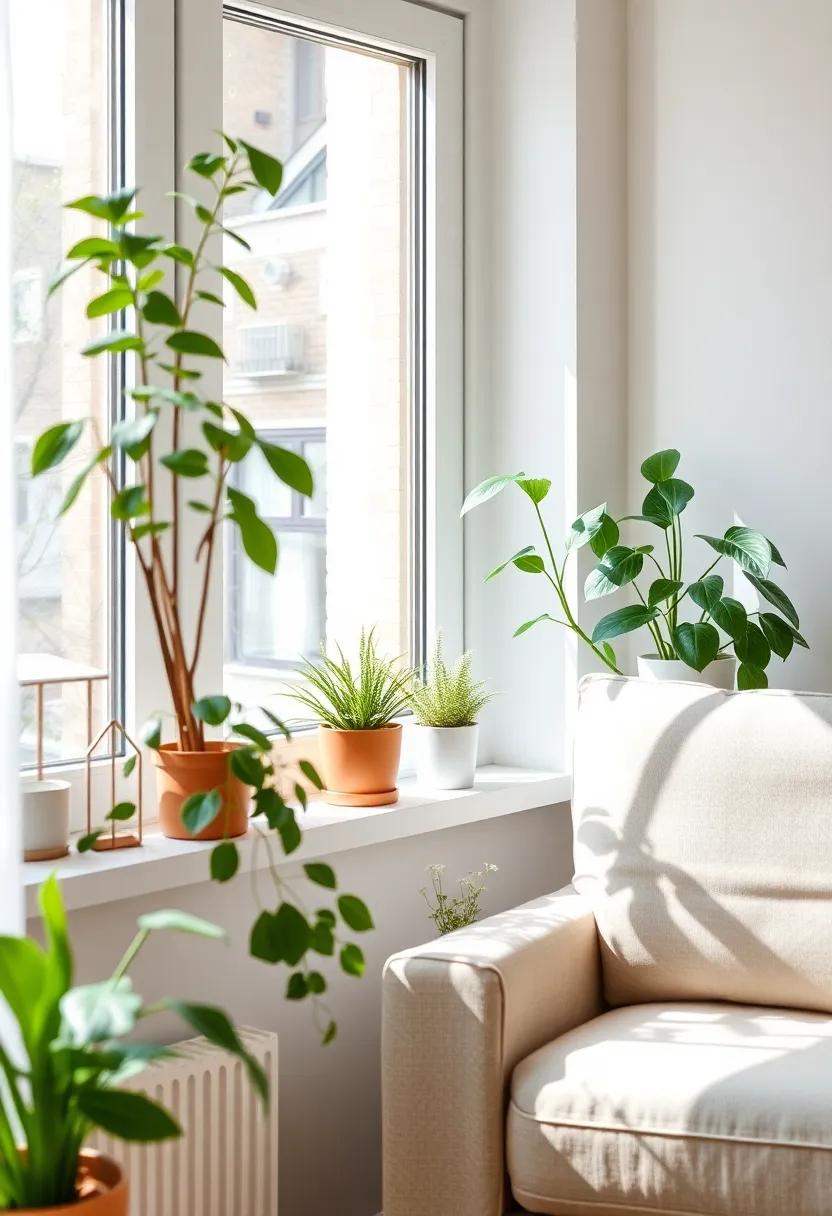
Transform your window sill into a lush retreat by arranging small pots of vibrant greenery that will thrive in the sunlight. Select a mix of easy-to-care-for plants that not only brighten your space but also bring life and color. Consider options like succulents,herbs,or small flowering plants that enjoy basking in the sun’s rays. A delightful arrangement of plants like spunky succulents, aromatic basil, and cheerful marigolds can create a mini garden that adds charm while purifying the air.
To maintain a visual appeal, opt for colorful pots or unique ceramic containers that serve as eye-catching decor. You can create playful heights by stacking some pots on small stands or using trailing plants to add dimension. don’t shy away from personal touches—add decorative stones or fairy lights around the plants for a whimsical flair. Keeping your mini garden tidy with occasional pruning will not only promote growth but also ensure that your window sill oasis continues to thrive beautifully.
Create a Jungle Vibe: Choose bold, leafy plants like monstera or fiddle leaf fig to instantly transform your space into an indoor jungle
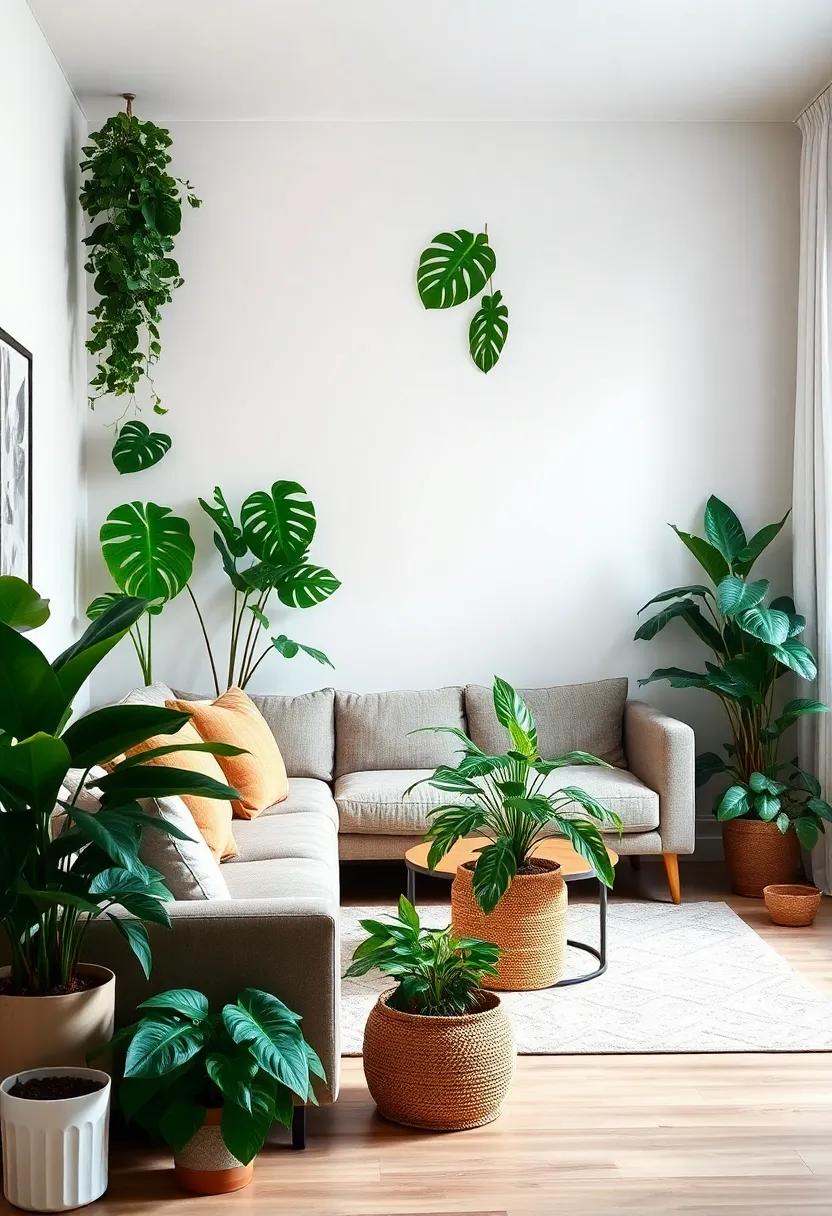
Enhancing your living space with bold,leafy plants can create a lush,tropical atmosphere that radiates both energy and serenity. Choose plants like the monstera or fiddle leaf fig that boast large, sculptural leaves. These striking specimens not only add visual interest but also serve as natural air purifiers, promoting a healthier indoor environment. Position a monstera near a window to maximize its leaf growth while cascading a fiddle leaf fig in a corner to draw the eye upwards and create a sense of height in your living room.
To further enrich the jungle vibe, think about grouping your plants in varying heights and sizes. This layering effect mimics the natural growth patterns found in tropical settings. Consider using decorative pots that reflect your style and complement your plant choices. You could also display your leafy friends on floating shelves or plant stands to elevate their presence. Here’s a simple table to help visualize ideal placements for your plants:
| Plant Type | Ideal Location | Styling Tip |
|---|---|---|
| Monstera | Near a window with indirect light | Pair with a decorative ceramic pot |
| fiddle Leaf Fig | Corner spaces for height | Use a tall, slender planter for elegance |
| Rubber Plant | Full sunlight areas | Mix with smaller snake plants for variety |
Embrace Plant care: decorate with care labels to help you and guests remember watering needs and unique care instructions
Transform your plants into conversation starters while ensuring proper care with decorative care labels. These labels can serve as both a functional tool and a stylish addition to your plant decor. Consider using vibrant colors or fun fonts to match your living room’s aesthetic. You can create tags that detail essential data, such as:
- Watering Frequency: Highlight how frequently enough each plant should be watered.
- Sunlight Requirements: Indicate whether the plant prefers low, medium, or bright light.
- Humidity Needs: Note if the plant thrives in high humidity or prefers dryer air.
For a cohesive look, you could employ DIY labels using eco-friendly materials like wood or recycled paper. Moreover, adding illustrations or icons can make the labels visually appealing and easier to understand. Arrange them in a beautiful display with your potted plants, perhaps on a shelf or a coffee table, where guests can easily view them.Your living room will not only showcase a lovely collection of greenery but also become a hub of shared plant knowledge, enchanting visitors and igniting their interest in plant care.
Group Dynamics: Cluster plants in groups of three or five for an impactful,collective look that feels intentional and full of life
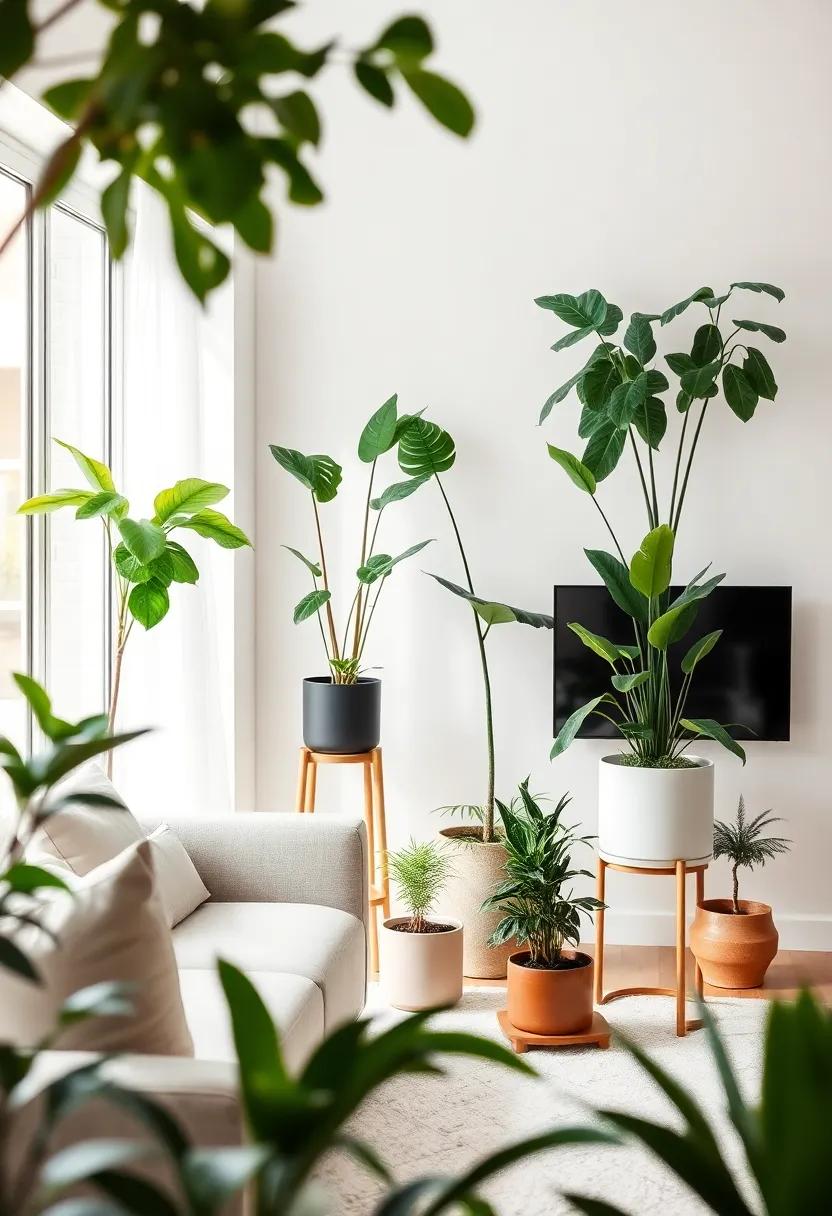
Creating a vibrant atmosphere in your living room can be as simple as grouping your potted plants in arrangements of three or five. This intentional clustering not only draws the eye but also enhances the natural beauty of each individual plant.Consider a mix of textures and heights to add depth to the display: pair a tall snake plant with shorter succulents and trailing ivy. Your guests will feel the life emanating from this organized chaos,giving your space a sense of nature’s bounty.
To maximize the impact of your plant groupings, follow these design principles:
- Vary Pot Styles: Use different pot designs to create visual interest while maintaining a cohesive color palette.
- Layer Heights: Arrange taller plants in the back and shorter ones in the front for an accessible view from all angles.
- Include Focal Points: Incorporate a statement piece—like a unique or flowering plant—to anchor the group.
- Accessibility: ensure that each plant receives adequate light and care by placing them in easily reachable spots.
When grouping plants, consider their individual light and water requirements to ensure that they thrive together. The table below offers a quick reference guide to help you pair plants effectively:
| Plant Type | Light Needs | Watering frequency |
|---|---|---|
| Snake Plant | Low to Bright indirect | Every 2-4 weeks |
| Succulent | Bright indirect to Direct | every 2-3 weeks |
| English Ivy | Medium to Bright Indirect | Weekly |
| Pothos | Low to Bright Indirect | Every 1-2 weeks |
Minimalist zen: Opt for a few simple, sculptural plants like snake plants or succulents for a clean, minimalistic approach
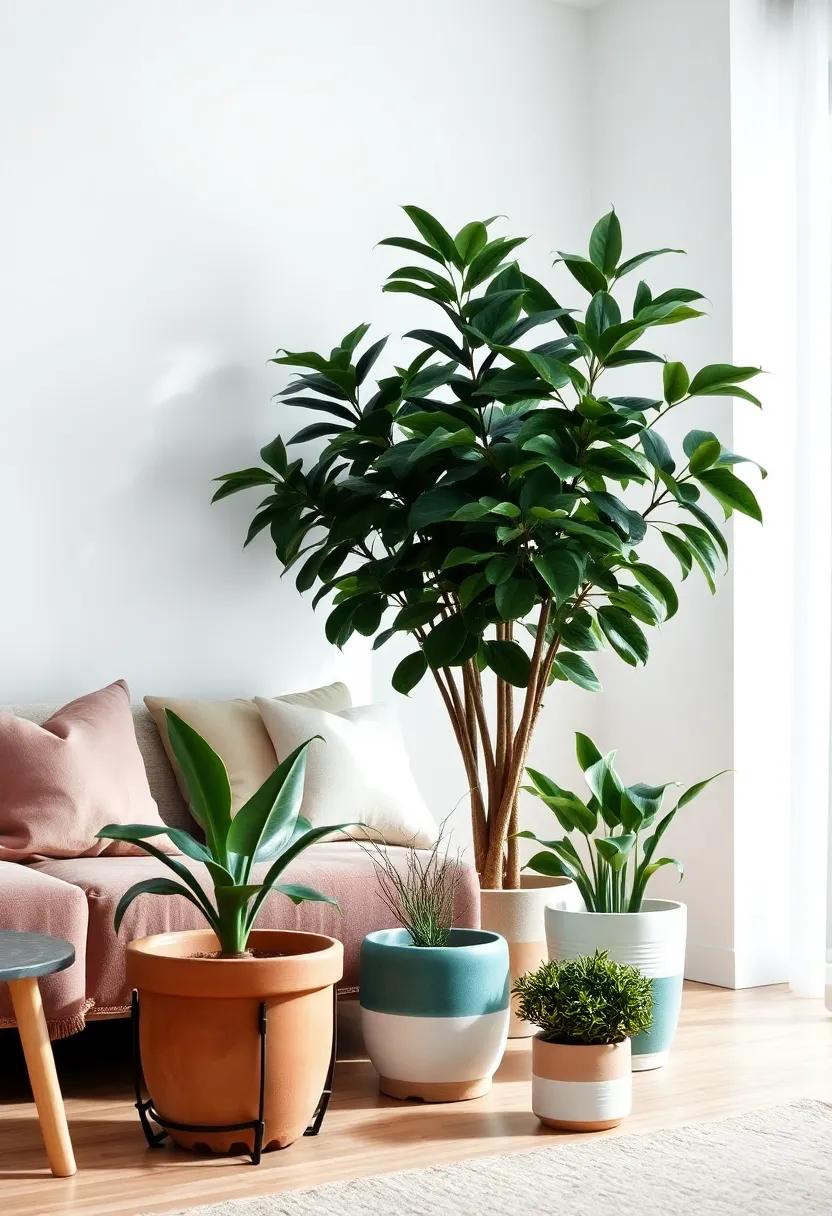
Embrace the beauty of simplicity in your living space by incorporating a few carefully-selected plants that embody minimalism and elegance. Snake plants, with their tall, upright leaves and strikingly architectural shape, create a stunning focal point without cluttering the visual landscape. They thrive on neglect, making them perfect for busy urbanites.Succulents, with their diverse forms and textures, can be grouped together for maximum effect. Their soft, muted colors complement a variety of décor styles, adding a touch of natural beauty to your home.
To enhance the minimalist aesthetic, consider using contemporary planters that complement the sculptural qualities of the plants. Opt for materials such as ceramic, concrete, or simple terracotta in neutral tones to maintain a cohesive look. Arranging these plants on a sleek shelf or a clear coffee table can create an eye-catching display while keeping your space airy and open. Here’s a quick comparison of popular minimalist plant options:
| Plant Type | Height | Care Level |
|---|---|---|
| Snake Plant | 2 to 4 feet | Low |
| Jade Plant (Succulent) | 1 to 3 feet | Moderate |
| Aloe Vera | 1 to 2 feet | Low |
| ZZ Plant | 2 to 3 feet | Very Low |
Seasonal Swaps: Switch out seasonal plants—like poinsettias for winter and sunflowers for summer—to keep your decor fresh year-round
embrace the charm of each season by exchanging your plants to reflect the natural beauty around you. In winter, swap your vibrant summer blooms for classic poinsettias that evoke holiday cheer and warmth. Their rich red and green hues instantly elevate your space and create a festive atmosphere. As spring arrives, transition to tulips and daffodils, offering a burst of color and a sense of renewal. Let these cheerful flowers occupy your space and invite the freshness of spring inside. In fall, consider the stunning chrysanthemums, whose earthy tones encapsulate the essence of autumn, while evergreens add longevity and depth throughout the colder months.
Keep your living room feeling alive and dynamic by cycling through different summer and fall plants. During warm months,usher in sunflowers,their sunny disposition brings joy and brightness,while zinnias can introduce more vibrant colors to compliment the outdoor blooming scenery. As summer fades into fall, incorporate ornamental cabbages and pumpkins for a touch of rustic elegance, and don’t forget about a variety of succulents that pair well with both seasonal styles. To help you visualize this seasonal transformation, here’s a suggested plant swap table:
| Season | Plant Suggestions | Color Palette |
|---|---|---|
| Winter | Poinsettias, Evergreens | Red, Green |
| Spring | Tulips, Daffodils | Pastel Pink, Yellow |
| Summer | Sunflowers, Zinnias | Bright Yellow, Orange |
| fall | Chrysanthemums, Ornamental Cabbages | Earthy Tones |
Decorative Plant Stands: Elevate your plants with stylish stands that add dimension and sophistication to your living room decor
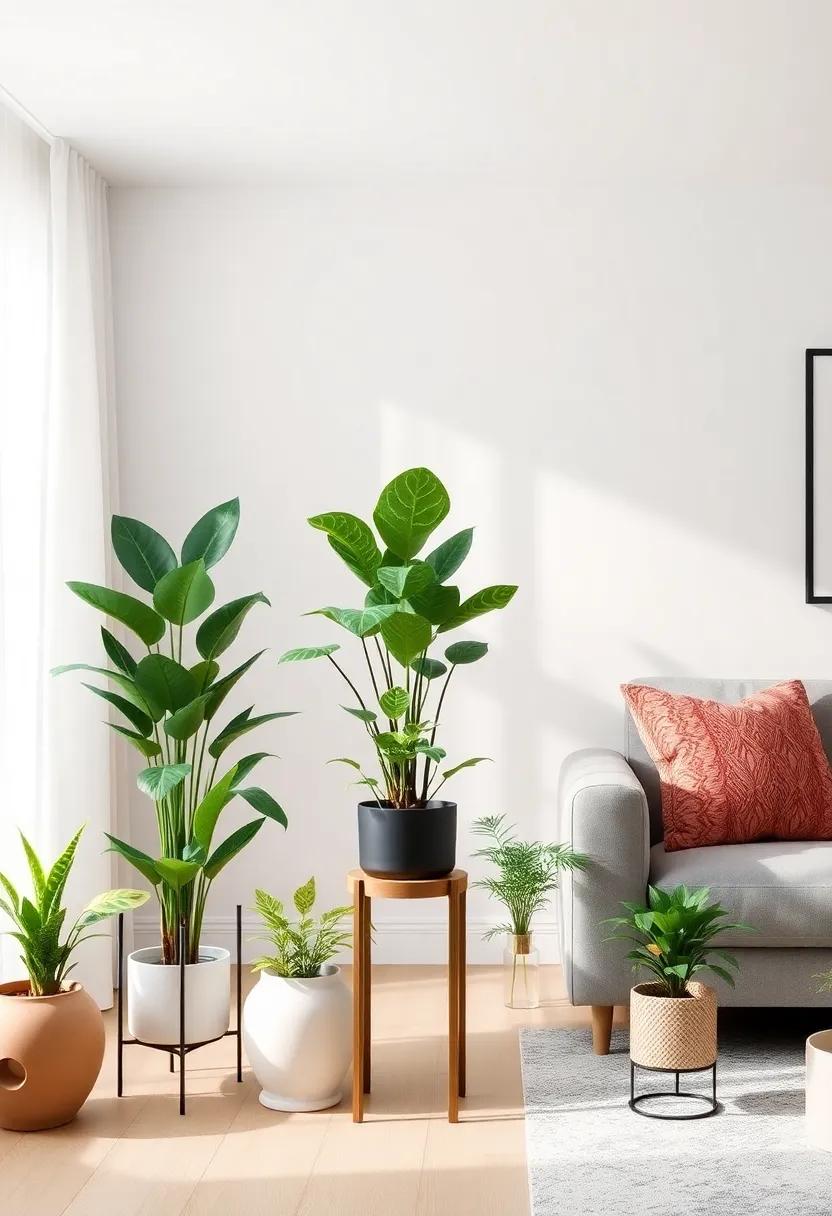
enhancing your living room decor becomes effortless when you incorporate decorative plant stands that not only showcase your beloved greens but also serve as stunning focal points. The right stand can bring height and structure to your space, drawing the eye upward and creating an inviting atmosphere. Consider these stylish options:
- Mid-Century Stands: with their retro flair, these stands add a touch of nostalgia and warmth to your room.
- Industrial-Style stands: Perfect for modern spaces, these pieces often feature metal and wood combinations that bring a chic edge.
- Tiered Plant Stands: A dynamic choice that allows you to layer plants of varying heights, adding visual interest and maximizing space.
In addition to aesthetic appeal, decorative stands also serve practical purposes—like improving air circulation for your plants.When selecting a stand, keep in mind the size and style that best complements your other furnishings. Don’t forget to consider the material, as wooden stands can enhance a cozy look, while glass or metal options lend a sleek, contemporary vibe. Explore these ideas:
- Rustic Wooden Stands: bring a slice of nature indoors with reclaimed wood options, perfect for farmhouse-themed spaces.
- Wall-Mounted Plant Shelves: Save floor space while creating a vertical garden effect that draws attention to your favorite plants.
- Plant Stands with Storage: Combine functionality with style by choosing stands that offer shelf space for books or decorative items.
DIY Pot Painting: Get crafty and paint your own pots, adding a personal touch that enhances your living room’s character
DIY Pot Painting
Give your living room a unique flair by transforming plain pots into vibrant works of art. Start by gathering some basic supplies: terracotta pots, acrylic paints, brushes, and a sealant to protect your masterpiece. You can either paint them solid colors or experiment with patterns such as stripes, polka dots, or even intricate designs for a more personalized touch. For those feeling adventurous,try using a sponge for a textured effect or stencils for clean lines. Remember to allow each layer to dry completely before applying additional coats, ensuring your design pops beautifully.
Consider using a color palette that complements your existing decor for a cohesive look. You can also get creative with themes,such as boho chic,minimalist,or vintage,to match your style. as a fun project, invite friends over for a pot painting party where everyone can contribute to a communal display of plants. If you’re not sure where to start, here’s a quick table for inspiration on different painting styles and their characteristics:
| Style | Description |
|---|---|
| Geometric | Bold shapes and crisp lines for a modern vibe. |
| Floral | Vibrant flowers to create a lively, natural feel. |
| Ombre | Gradual blending of colors for a soft, elegant touch. |
| Textured | Creating depth with sponges or rough brushes. |
Use Plants to Frame Views: Position taller plants strategically to frame windows, drawing attention to the natural light and the outdoor landscape
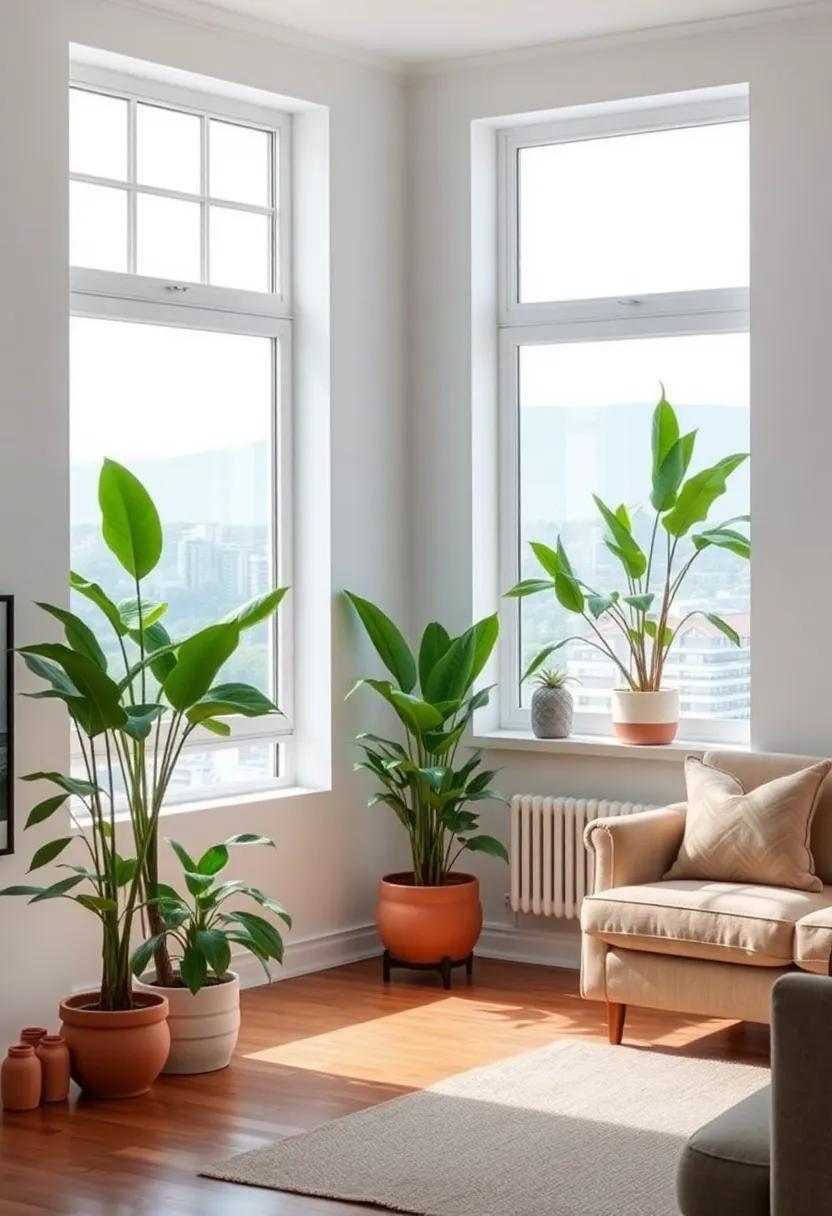
Transforming your living space can be achieved by strategically positioning taller plants to create a natural frame around your windows.This approach not only highlights the beauty of the outdoors but also elevates the overall ambiance of the room. Consider using palms,fiddle leaf figs,or dracaenas—these plants can reach impressive heights and add a sense of grandeur while also infusing vitality into your decor. Placing them at either side of a window can guide the eye towards the natural light streaming in, making your living room feel both airy and alive.
To enhance this effect, choose pots that complement your interior style, whether it’s sleek ceramic for a modern look or rustic terracotta for a more conventional feel. Here are a few tips to keep in mind when framing your views with plants:
- Consider the Size: Ensure the plants are tall enough to draw focus but not so large that they obstruct light.
- Select Varieties with Texture: Choose plants with varying leaf shapes and textures to create visual interest.
- Maintain Symmetry: Balancing the height and width of the plants on either side of the window creates harmony in your space.
Additionally, integrating vertical plant stands can add layers to your arrangement while still allowing light to enter. Here’s a simple table to show recommended plant heights and the ideal window types they complement:
| Plant Type | Recommended Height | Best Window Style |
|---|---|---|
| Fiddle Leaf Fig | 5-6 feet | Large Picture Windows |
| Parlor Palm | 3-4 feet | Casement Windows |
| Snake Plant | 2-3 feet | Sliding Glass Doors |
By balancing vibrant greenery with the captivating views outside, your living room will not only feel more spacious but will also provide a serene connection to nature, transforming your daily living experience.
Incorporate Edibles: Add herbs like basil or rosemary to your living room to enjoy the benefits of both aesthetics and culinary flavor
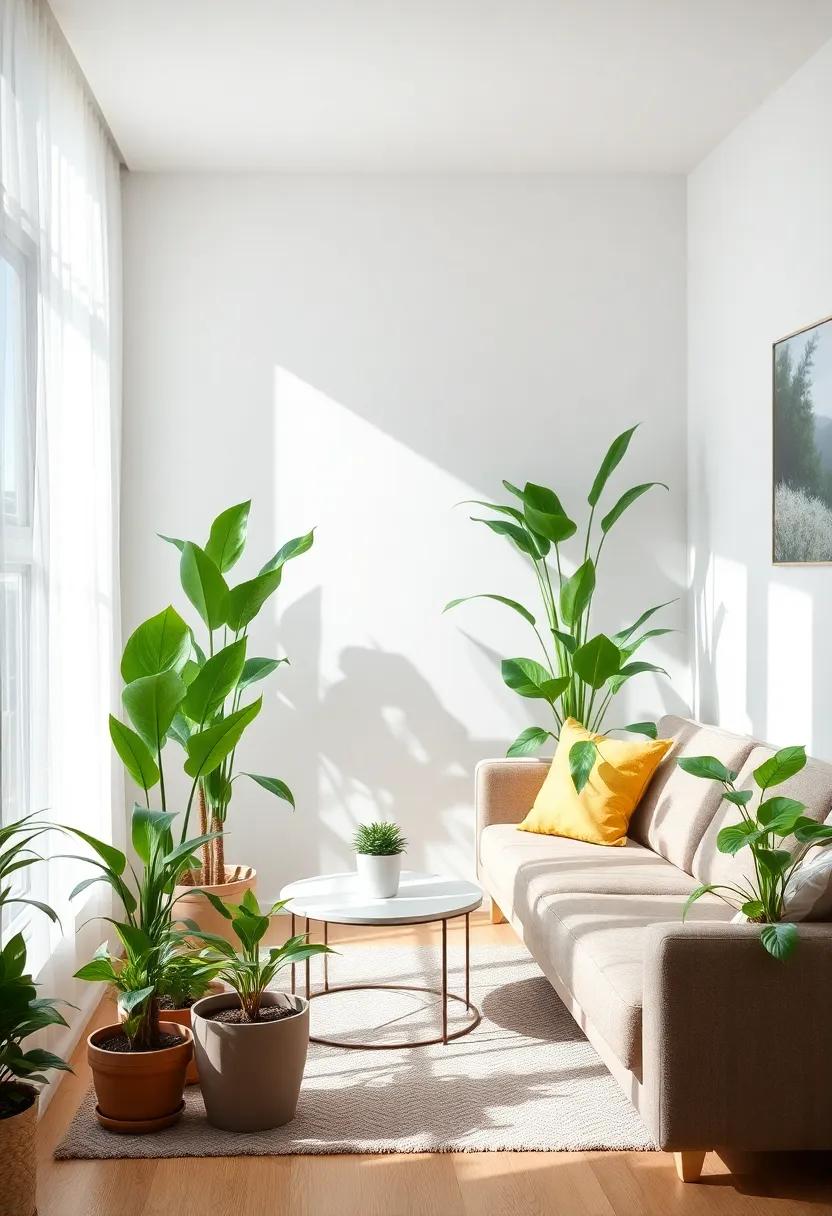
Bringing the outdoors into your living area is never more delightful than with potted herbs like basil and rosemary. Not only do these greenery options enhance the aesthetic appeal of your living room, but they also infuse the space with a refreshing aroma. Imagine a vibrant pot of regal basil, its leaves gleaming in the sunlight, juxtaposed against a modern coffee table or a rustic bookshelf. The unique texture and colors of these herbs can add a touch of elegance while offering a hint of culinary flair to your home.
Incorporating edible plants allows you to create a visual feast, inspiring not just your senses but your cooking as well. The following tips can enhance your herb-growing experience:
- Choose decorative pots: Select colorful, patterned, or textured pots that match your living room decor.
- Mix and match: Combine different herbs and plant types for an eye-catching arrangement.
- Utilize window sills: If you have sunny spots, display your herbs there to maximize sunlight exposure.
- Regular pruning: keep your herbs looking lush and full by regularly removing excess leaves for use in cooking.
Consider creating a small herb display using a wooden crate or shelf to differentiate your edible plants from ornamental ones. You can design an aesthetically pleasing arrangement similar to this:
| Herb | Light Requirements | Culinary Uses |
|---|---|---|
| Basil | Full sun | Pasta sauces, salads |
| Rosemary | Full sun to partial shade | Meats, breads |
With such versatile herbs, you can enjoy both the beauty of your living space and the satisfaction of including homegrown flavors in your meals.
Natural Light Play: Position light-sensitive plants near sources of natural light for vibrant growth and a healthy, green atmosphere
Enhancing your living space with light-sensitive plants can breathe new life into your apartment. Positioning them near windows or bright corners maximizes their exposure to natural light, which is essential for their growth and vibrancy.Consider using plants such as spider plants, snake plants, or pothos, all of which thrive in bright, indirect sunlight. These plants not only offer lush greenery but also add a pleasing aesthetic appeal to the room. The play of light against their leaves creates a dynamic environment, giving your living area a refreshing ambiance.
Below is a simple guide to help you choose the right light-sensitive plants and their ideal placement:
| Plant Type | Light Preference | Placement Tips |
|---|---|---|
| Spider Plant | Bright, indirect light | Near a window with filtered light |
| Snake Plant | Tolerates low light | On a shelf or table near light |
| Pothos | Bright, indirect light is ideal | Hanging near a window |
Not only do these plants improve the air quality, but they also promote a sense of well-being, making your living area a more inviting and serene space. So, embrace the art of natural light play by strategically placing your potted plants, and watch them thrive as they transform your apartment into a green oasis.
Go Monochromatic: Select various shades of one color for your plants and pots to create a sophisticated, monochromatic theme

Elevate your living room aesthetics by embracing the beauty of monochromatic plant arrangements. Select a dominant color that resonates with your space and curate a collection of plants and pots in varying shades of that color. For instance, if you choose a calming blue, you could combine a cerulean ceramic pot housing a silver pothos, alongside a navy-blue planter showcasing a delicate blue fern.This coherent color palette not only creates visual harmony but also adds depth and sophistication to your décor.
To enhance this theme, consider incorporating various textures that complement your chosen color. You can juxtapose matte and glossy finishes for your pots or mix in different foliage textures ranging from smooth leaves to fine, feathery fronds.Additionally, you might arrange your plants at different heights using stylish plant stands to create an eye-catching tiered effect. Here are a few ideas to guide your selections:
- Green: Olive tree in a deep emerald pot, paired with a jade plant in a light green container.
- Yellow: Sunflower in a pale yellow planter, alongside a golden pothos in a mustard pot.
- Pink: Pink rubber tree in a blush pink ceramic pot, complemented by a light pink cyclamen.
Promote Relaxation: Choose soft, calming plants like peace lilies that also purify the air, enhancing tranquility in your space
Incorporating soft, calming plants into your living room not only creates a serene atmosphere but also contributes to a healthier indoor environment. Consider opting for peace lilies, known for their elegant, glossy leaves and delicate white blooms. These beauties are more than just a visual delight; they thrive in low-light conditions and require minimal maintenance,making them ideal for apartment dwellers. Aside from their aesthetic charm, peace lilies are proficient air purifiers, filtering out harmful toxins and promoting cleaner air. Other calming plant options include:
- Snake Plant: Resilient and striking, it’s perfect for any decor.
- Spider Plant: easy to care for and known for its air-purifying qualities.
- Pothos: Versatile and trailing, this plant adds a touch of greenery without overwhelming the space.
To maximize the calming effect, consider strategically placing your plants for visual balance and harmony. Grouping them together can create a natural focal point while also enhancing their air-cleaning capabilities. you might opt for a stylish plant stand or hang some pots for a layered effect. Combine plants of differing heights and textures to evoke a sense of nature indoors. Use this simple table to identify some popular options that promote relaxation:
| Plant | Benefits |
|---|---|
| Peace Lily | Removes toxins and promotes humidity |
| Boston Fern | Boosts indoor air quality and lowers temperature |
| Areca Palm | Excellent humidifier and adds a tropical feel |
Feature Foliage: Use leaves of different shapes and textures to create a tapestry of green, lending richness and diversity to your decor
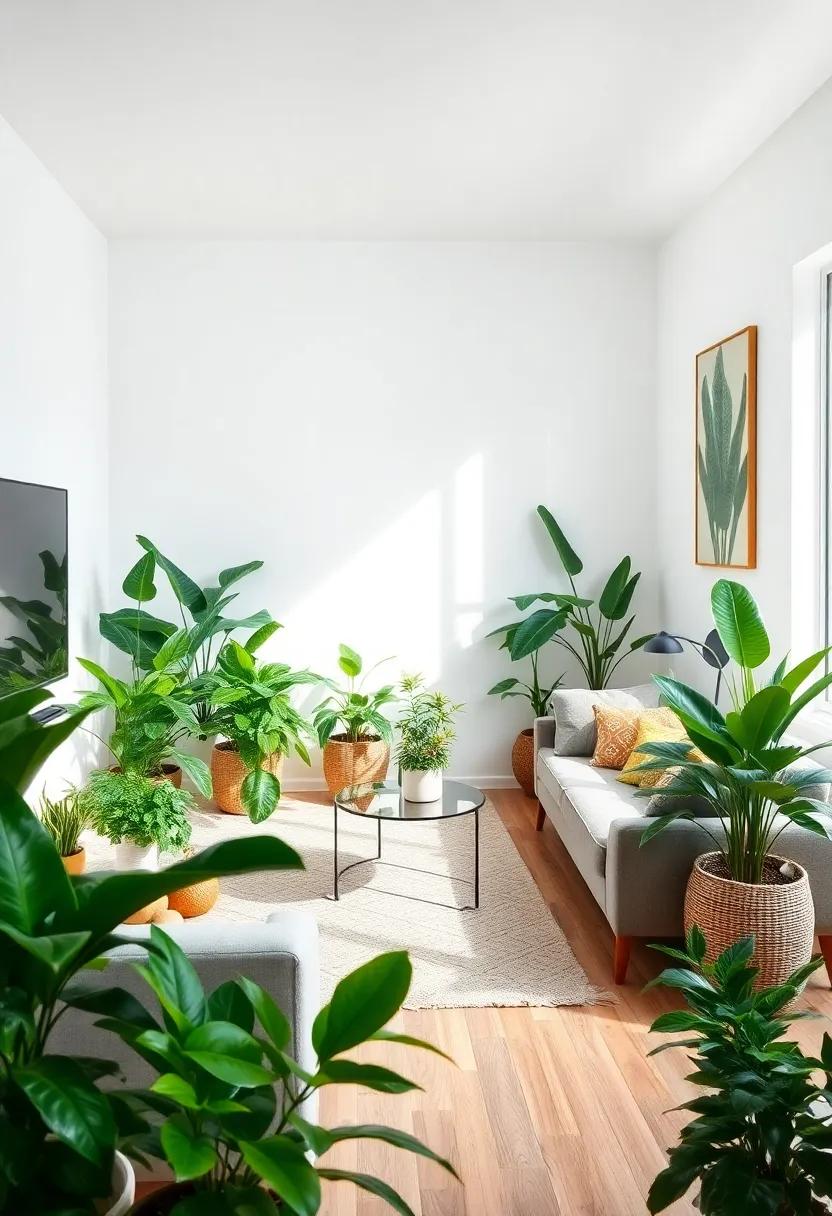
transform your living room into a verdant oasis by incorporating an array of leaves, each unique in shape and texture. The striking contrast between broad, glossy leaves and slender, delicate fronds can evoke a lush, layered appearance that captures the essence of a botanical garden. combine plants such as Fiddle Leaf Figs for their dramatic silhouette, ZZ Plants for their waxy finish, and Asparagus Ferns for a feathery touch to create a lively yet calming atmosphere. Mix in variegated and solid greens to enrich the color palette, ensuring each plant’s leaves complement and enhance those around them.
One effective way to showcase this diversity is to curate groups of plants in varying heights and widths. For instance, placing a tall Rubber Plant beside a compact Pothos can add visual intrigue. Consider using decorative plant stands to elevate some specimens, creating depth and interest. To bring it all together, utilize textured pots that echo the leaves’ qualities; a matte ceramic pot can contrast beautifully with glossy leaves, while a rustic terracotta might harmonize with the natural grains of feathery plants. This layered approach cultivates a sense of richness,drawing the eye and inviting exploration in your living space.
Personalize with Memories: Use plant pots that hold personal memories or stories, turning them into cherished focal points in your living room
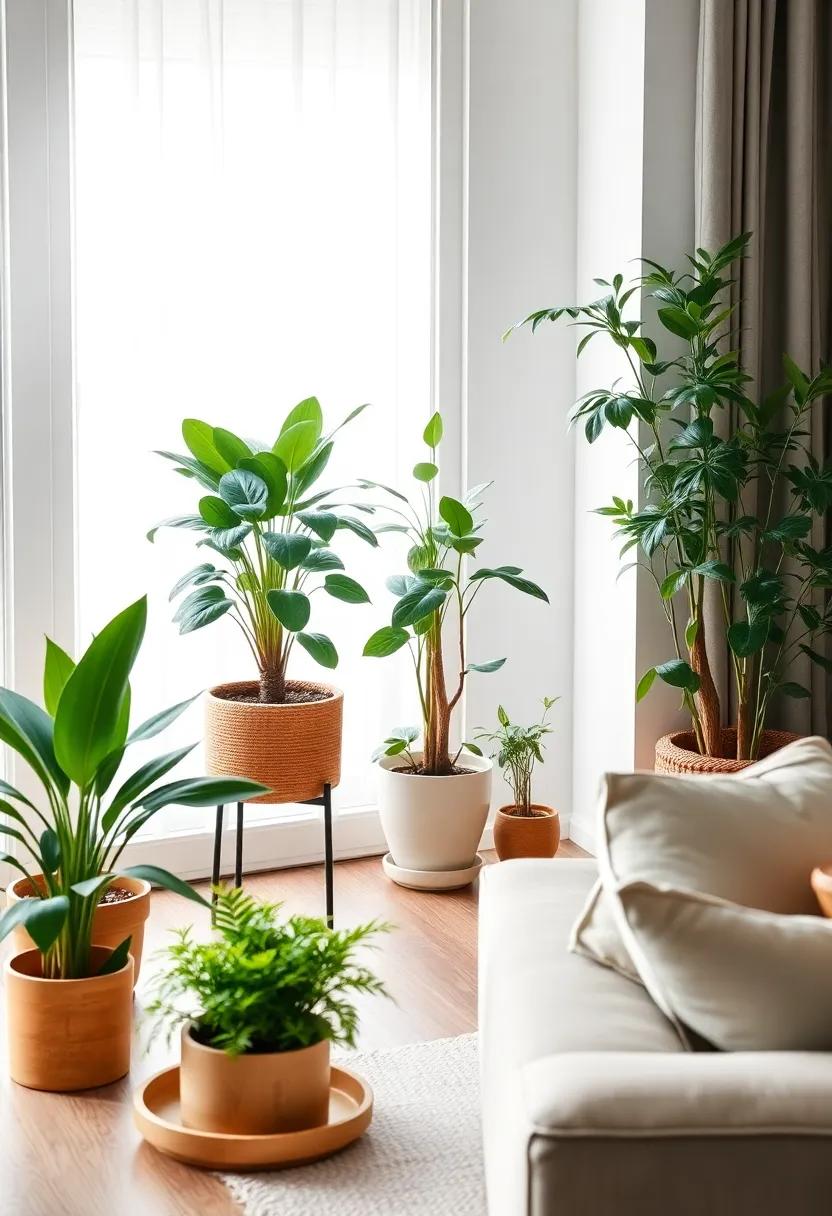
Imagine walking into your living room and being greeted by a vibrant collection of plant pots that not only add life to your space but also tell a story about who you are. To create a truly personalized atmosphere, consider selecting pots that hold significant memories. Each pot can showcase a cherished moment, such as a gift from a loved one, a souvenir from a memorable trip, or a creation from a DIY project that reflects your personal journey. for example, you might have a handmade terracotta pot decorated with designs that remind you of your summer in italy, or a sleek modern planter that was a birthday gift from your best friend, filled with a flourishing fern that represents growth and positivity.
To enhance this concept, you can go a step further by labeling each pot with a small tag that shares its story. This not only engages guests but also transforms your plant collection into a conversation starter. Consider making a tiny table like the one below to give visitors a brief insight into each pot’s meaning:
| Plant | Memory |
|---|---|
| Aloe Vera | Gift from Grandma, symbolizes healing. |
| Succulent | Picked up from a road trip, reminds of adventure. |
| Ficus | Created in a pottery class, represents creativity. |
By infusing your living space with these personalized pots, you not only curate a stunning botanical display but also create a warm ambiance filled with memories and meaning, making your living room truly distinct and inviting.
Key Takeaways
As we wrap up our journey through the vibrant world of potted plants, it’s clear that the right greenery can transform your living room into a personal sanctuary. From the towering elegance of a fiddle leaf fig to the delicate charm of a string of hearts, each plant possesses the unique ability to breathe life into your space, both aesthetically and atmospherically. Remember, your apartment is more than just a living area; it’s a reflection of you—and incorporating plants can enhance not only its visual appeal but also your well-being.
As you select your leafy companions, let your creativity flourish. Experiment with different arrangements, explore unique planters, and embrace the seasonal shifts that nature offers. Each plant is a step toward cultivating not just an inspiring living area, but also a nurturing environment that resonates with your personal style. So,gather those pots,dig into the soil,and watch as your living room evolves into a lush haven. Happy planting!
As an Amazon Associate I earn from qualifying purchases.
